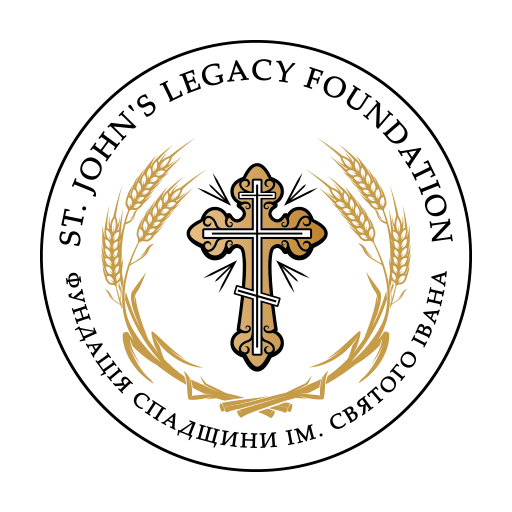St. Vladimir Ukrainian Orthodox Church – Vegreville (UOC)
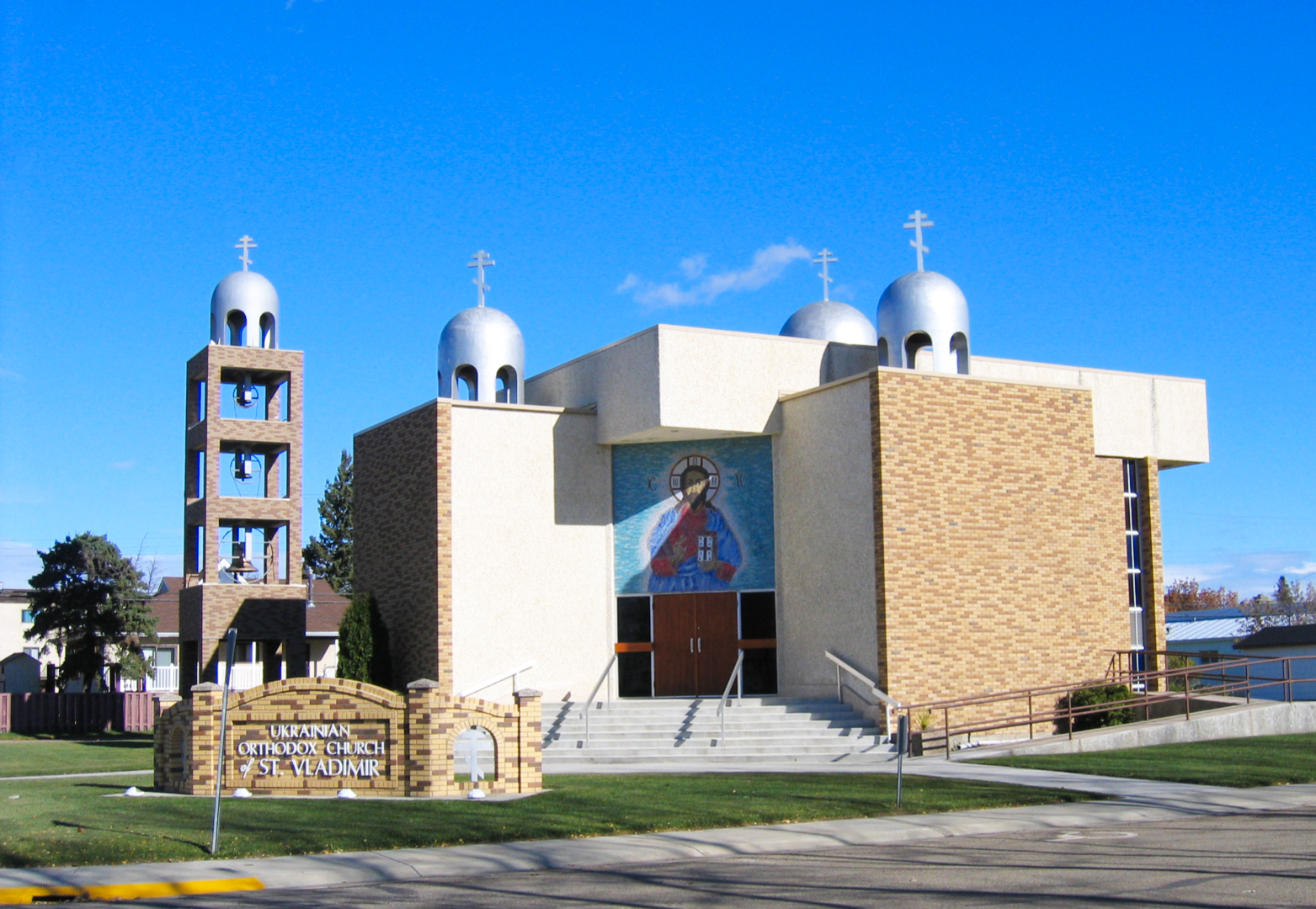

Photographs | Churches
Supporters of the Ukrainian Orthodox Church in Vegreville initially attended services at the Dormition of St. Mary Church in the Sich-Kolomea district, 8 miles northeast of Mundare, and 9 miles northwest of Vegreville. Although a Russo-Orthodox Church dedicated to St. John the Baptist was built in Vegreville in 1922-23 (a congregation initially having been organized almost a decade earlier), it failed to attract followers among nationally conscious Ukrainians because of its Russophile orientation and Russian affiliation. As the number of Ukrainians Orthodox adherents living in Vegreville increased, it became increasingly inconvenient for them to have to travel to Sich-Kolomea to worship, especially when poor weather adversely affected road conditions. The decision to create a congregation in Vegreville was made at a meeting held at the home of William and Anna Pidruchney on March 8, 1928. At that time, an interim executive was formed with Peter Svarich as President, William Pidruchney as Secretary, and William Kieryluk as Treasurer. The first Divine Liturgy was then celebrated at the Vegreville National Home (5146-51 Avenue) on March 31, 1928, with Rev. Ivan Maiba, the pastor at Sich-Kolomea, officiating.
The interim executive oversaw the organization of the parish until a general meeting was held on October 13, 1929. Thirty-four people attended the gathering, which elected an executive, headed again by Peter Svarich, with W. Pidruchney becoming Treasurer and W. Zaruby taking over as secretary. Subsequently, a total of 34 individuals and eighteen families paid $5 in memberships to belong to the congregation, that immediately initiated a campaign to raise funds for the construction of a sanctuary.
Two designs were considered for the church once the congregation was ready to proceed with construction. One design was prepared by Harry Osiecki, a master carpenter and talented cabinetmaker who had settled in Vegreville around 1910. Osiecki subsequently established a successful woodworking and construction business, developing a local reputation for his skilled application of different finishes and polishes and for his ability to build houses using only a picture. He also became renowned for his ability to construct the onion-shaped domes that adorn traditional Ukrainian churches in a way that they would not leak. Among the churches that he constructed were St Mary’s Ukrainian Orthodox Church at Szypenitz (1913 and again in 1917), and Holy Ascension Ukrainian Catholic Church in New Kiew (in 1918-19). He also assisted in the construction of St. John the Baptist Ukrainian Catholic Church in Borshchiw (1939-40). Always a heavy drinker, the personable Osiecki became increasingly dependent on alcohol and his once-flourishing businesses steadily declined so that by the time of his death in 1946 he was a pauper.
A second design was produced by John Svarich, Peter Svarich’s brother, who in 1929 had completed an engineering degree at the University of Alberta. Although both men belonged to the St. Vladimir congregation, John was always active in church affairs and in various Ukrainian cultural endeavours, whereas Harry was only peripherally involved in organized Ukrainian community life, in addition to being plagued by some personal problems. Members eventually decided to go with John Svarich’s proposed plan, partially because it was cheaper to build. Nevertheless, Harry Osiecki was given the contract to oversee the construction of the church, for which he was to be paid $0.55 cents an hour.
However, Osiecki’s drinking problems soon got the better of him, and the congregation had to let him go and hire Stanley Bellegay to complete the job. Bellegay had become a partner in Osiecki’s business in the 1920s and was therefore accustomed to having to deal with the negative fallout from Harry’s drinking problems. Although not as talented a carpenter and slower in finishing jobs, he nonetheless saw the construction of St. Vladimir’s church through to completion in 1935. The total cost of the project was $3,582.68, a not inconsiderable sum for a congregation to have to raise in the middle of the Depression.
The church constructed on the southeast corner of 52 Street and 49 Avenue. The ikonostasis was carved by Ivan Tkach of Smoky Lake. In 1956 the church was expanded to accommodate the growing needs of the congregation. The widest part of the nave was doubled in size, and the apse was moved back 18 feet.
As the town of Vegreville grew in the 1960s, thanks in part to an influx of Ukrainians from the surrounding countryside, the Orthodox community outgrew the original church. It was decided to build a larger and more modern place of worship on a property immediately south of the original sanctuary, at 5146-48 Avenue. After the site was blessed in 1972, construction began the following year.
On October 21, 1973, a final service was held at St. Volodymyr’s Church, a somewhat solemn event that concluded with members carrying the banners, cross, and other objects from the old church in a procession to the new sanctuary, with the priest bearing the chalice.
Afterwards, the old St. Volodymyr’s Church was essentially abandoned, much to the chagrin of a prominent long-time member, Anna Pidruchney, who felt that it deserved to be treated like a mother. Writing to the Consistory in 1977, Mrs. Pidruchny lamented that the church which she had helped to build was now neglected and disregarded by younger members of the congregation, She then offered to buy the old church with the intention of seeing it revitalized with a new congregation that would not compete with current members as it would be comprised of people who were determined to resist assimilation and the erosion of traditional values as well as disenchanted Ukrainian Catholic and Russian Orthodox adherents. Eventually, the “old” St. Volodymyr’s church was moved to the Ukrainian Cultural Heritage Village in 1983, where it was restored to its pre-expansion dimensions and today serves as an occasional setting for weddings and other events.
Polytaiko of Chernivtsi, Ukraine, was commissioned to carve an iconostas for the church, which his son, Deacon Nazar Polytaiko, of Winnipeg, subsequently adorned with ikons.
Play Memory Eternal Chant
Visit this Cemetery
GPS Co-ordinates: 53.495498, -112.059188
Cemetery Co-ordinates: 53.52804,-112.18853
Affiliation: Ukrainian Orthodox Church of Canada
St. Vladimir Ukrainian Orthodox Church – Vegreville, AB
Holy Trinity Ukrainian Orthodox Church – Two Hills (UOC)
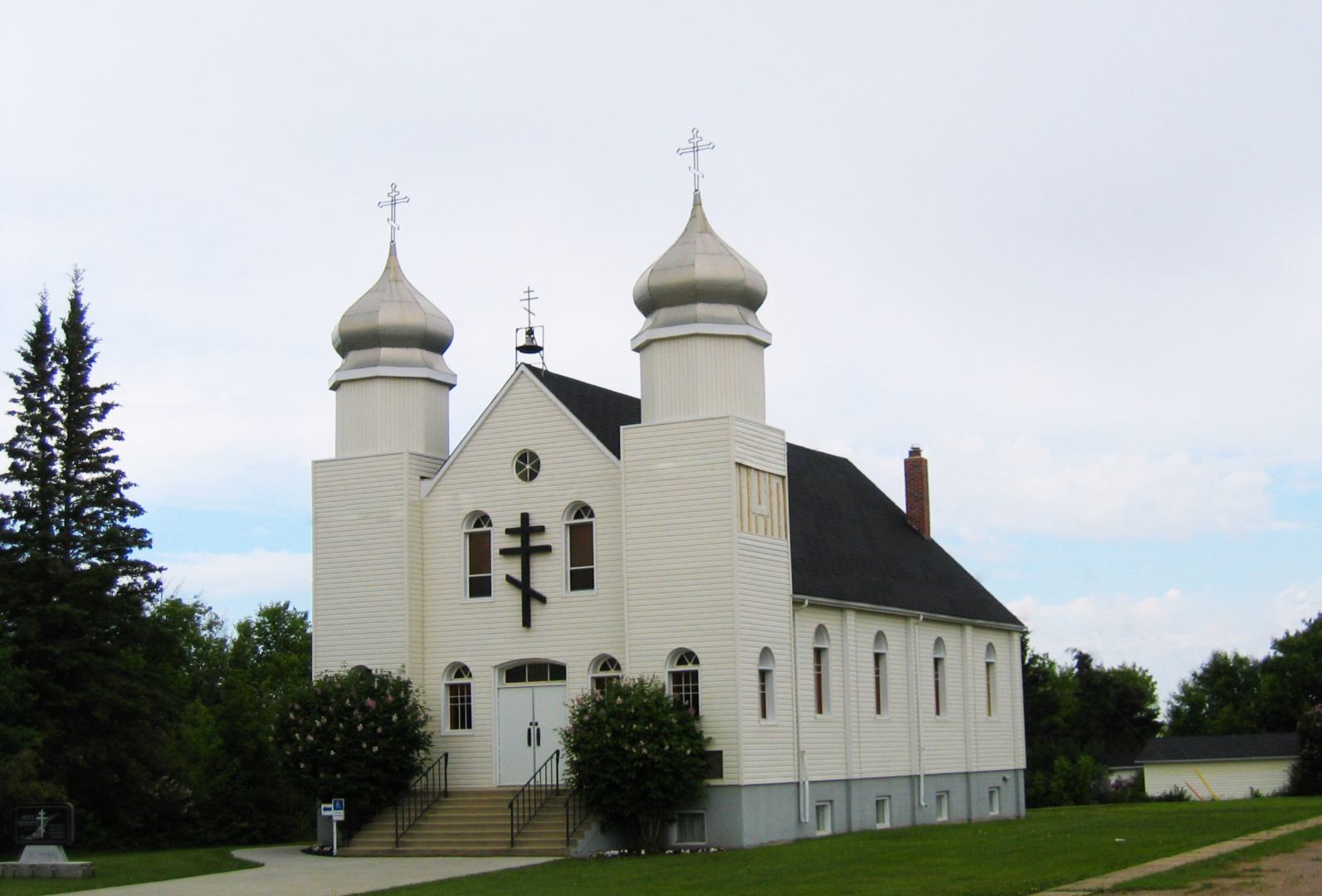

Photographs | Churches
The first Ukrainian Orthodox service was held in the recreation hall in 1943. For four years, the parishioners raised funds for the construction of a church. Concerts, plays, raffles and bazaars were held. Each Christmas carolers visited the homes where generous donations were received.
At the 1944 Annual General Meeting, the parish was named The Ukrainian Greek-Orthodox Church of Holy Trinity. Construction of the church began in 1947. In 1948, the first Divine Liturgy was held in the partially completed church.
In 1953 the domes and iconostasis were completed. Later cathedral glass windows were installed, and a large lighted cross was placed above the main door.
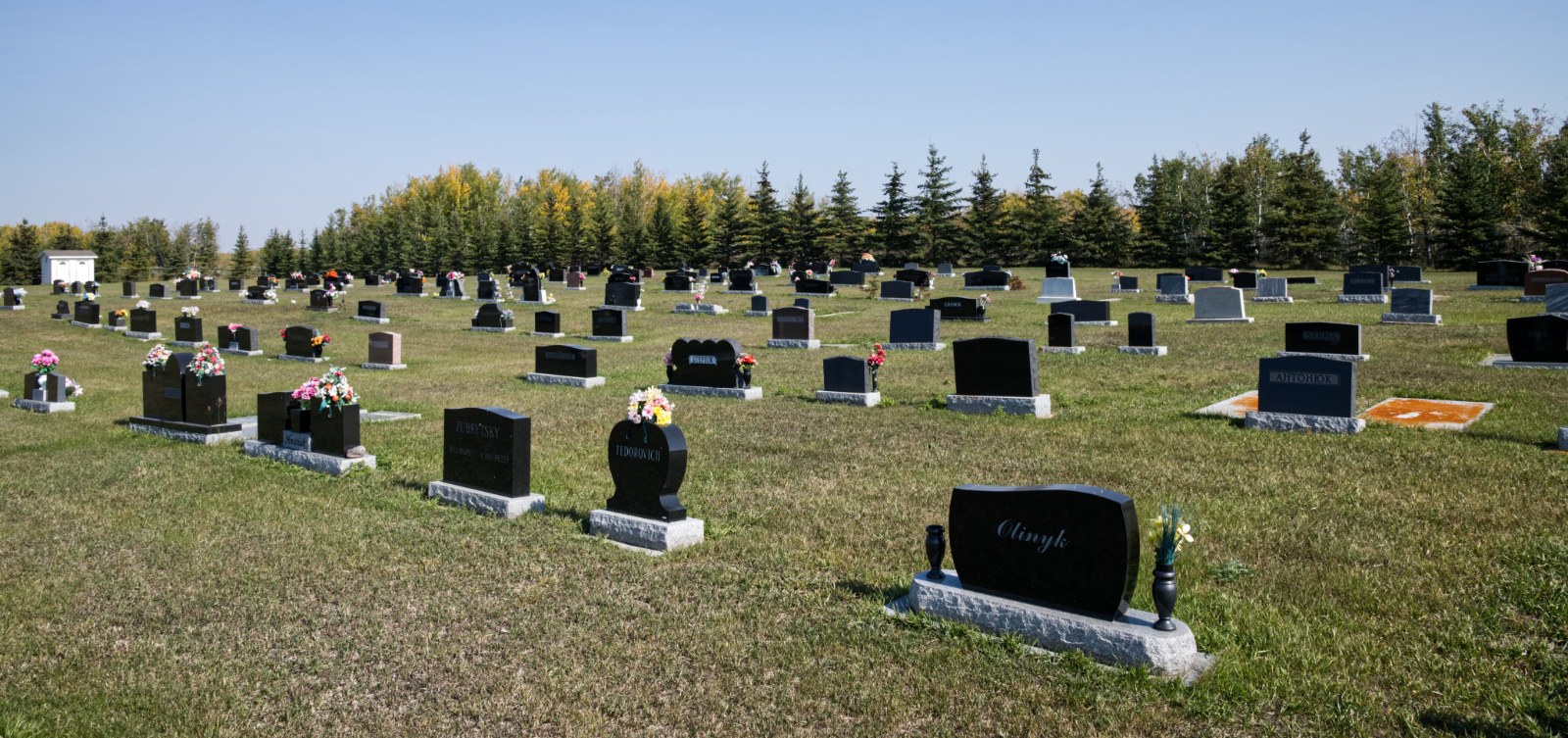
Play Memory Eternal Chant
Visit this Cemetery
GPS Co-ordinates: 53.712037, -111.746703
Cemetery Co-ordinates: 53.715837, -111.725916
Affiliation: Ukrainian Orthodox Church of Canada
Holy Trinity Ukrainian Orthodox Church – Two Hills, AB
St. Mary Ukrainian Orthodox Church – Szypenitz (UOC)
In 1907 the Orthodox settlers of the Szypenitz area acquired 45 acres of land for a cemetery (at NW 22-55-13 W4), that same year erecting a small log church to serve as their place of worship. The interior of this simple, gable-roofed structure, which did not have a dome, was finished with wide boards purchased in Vegreville. Priests with the Russian Orthodox mission based in Shandro and Boian initially attended to the needs of the faithful, whose resolve was soon tested when their modest sanctuary mysteriously burned to the ground sometime in 1909-1910. A new and larger church was subsequently constructed in 1913 on the site of the cemetery under the supervision of Harry Osiecki (Hryhorii Osietski). Each member donated $5 toward the lumber obtained from Vegreville, and afterwards assisting with their volunteer labour.
On 14 June 1916, three days after the Pentecost, Szypenitz church again burned down due to suspicious but unknown causes. It was believed by many area residents that the destruction of the church was provoked by confessional rivalries.
This time the new church was erected across the road from the cemetery (at SW 27-55-13), in the hope that the new sanctuary would escape the unhappy fate of its predecessors. Forty acres of land were purchased for $80.00 from Petro Eliuk. Once more Harry Osiecki was commissioned to oversee construction, using mostly volunteer labour and materials obtained from Gordon's Hardware Store in Vegreville. The tripartite structure with an apse, completed in 1919, is said to resemble the church in Osiecki's native village, featuring a large central dome, with a small dome over the narthex, as well as an entrance that is on the southwest side of the church. The design of the new edifice was also apparently based on the wooden variant that preceded it, providing a measure of continuity for beleaguered churchgoers and serving as a symbol of their determination in the face of adversity.
A wooden bell tower was subsequently put up in the southeast corner of the churchyard, and while its three bronze bells occasionally used to be rung to signal trouble in the community— such as a fire, or an emergency—they now only peal during customary religious observances.
St Mary's church has been a place of joyous and solemn commemorations marking the spiritual life of the Szypenitz community since the first decade of the century. As in most rural congregations, the number of the faithful has dwindled with urbanization, especially since the Second World War.
However, the pride which members feel about their sanctuary is still evident in the well-maintained churchyard and cemetery, which in the 1980s were further enhanced by the addition of two wrought-iron gates donated by Dan Lutzak and Frank Lakusta. In 1987, recognizing the historical importance of the Nativity of the Virgin Mary, the government of Alberta granted the church official designation as a historic site. Various repairs were then made to restore and preserve the structure for future generations, while a generous donation from member John Taschuk in 1986 helped to establish a Trust Fund devoted to the perpetual care of the cemetery.
The Cemetery
The first burial was that of Metro Wenechuk, followed a week later by the interment of two children who had died in a local diptheria outbreak, Kondrat Rusnak and Maria Eluk. The early crosses were made of wood, the inscriptions being applied with a tar-based black paint called 'antramate' that very effectively permeated the wood. As was customary, controlled grass-burnings were periodically used to clean the cemetery before major religious observances that focussed on the graveyard. Unfortunately, in the course of being prepared this way for Easter one year, an unexpected flare-up resulted in the destruction of almost all of the oldest wooden grave markers. This prompted many Szypenitz church-goers to purchase more durable markers from a Boian-area man named Tkachuk who specialized in the manufacture of cement crosses. Although some members of the congregation obtained metal crosses instead, these proved to be less popular because of their long-term susceptibility to rust.
Of special interest are the graves of Maria (1877-1960) and Symeon Megara (1871-1958), which are separated by a booth-like structure with a door and glass window. Inside this little "chapel", on a small table, there is a colour reproduction showing the Austro-Hungarian Emperor Franz Josef and his family. This military service document, on which apparently there was written a dedication to Hryhorii and Elesaveta Verenka and their deceased children, is a testament to the strong sense of loyalty which many immigrants from Western Ukraine felt toward the Hapsburg monarchy.

Play Memory Eternal Chant
Visit this Cemetery
GPS Co-ordinates: 53.773487,-111.849963
Cemetery Co-ordinates: 53.772789,-111.850125
Affiliation: Ukrainian Orthodox Church of Canada
St. Mary Ukrainian Orthodox Church – Szypenitz, AB
Holy Spirit Ukrainian Orthodox Church – Stry (UOC)
Congregational life was initiated at a meeting of local community activists on August 19, 1933, when a resolution was passed petitioning the Consistory of the Ukrainian Greek Orthodox Church of Canada for membership. A reply was finally sent on February 1, 1934, along with the forms necessary to officially register a new parish. The congregation formally requested acceptance into the ranks of the UGOC at a meeting held on October 30, 1940, by which time the parish had adopted as its name, Descent of the Holy Spirit.
In the meantime, Rev. I. Mayba began providing pastoral care to the Ukrainian Orthodox faithful of Stry, who in 1934 established a cemetery on land adjacent (to the west) to site of the future church. For eight years services were held at the second Stry National Hall (constructed 1931), the first hall (built at the same site in 1928-9, on land that had been donated by Nick Bunda) having been destroyed by fire in 1930.
In April 1938 the Stry congregation applied to the Department of Lands and Mines for permission to cut 20,000 feet of lumber on a nearby timber reserve to obtain wood to erect a place of worship. The lumber for the structure was cut at the Kutash sawmills in McRae, Alberta, after which church members took turns hauling material to the building site with their horse-drawn sleighs and wagons. According to a letter to the UGOC Consistory, the sanctuary was largely completed by the end of 1941, having been constructed by volunteers working under the supervision of master builder Ivan Mnoholitny.
The official blessing of the Descent of the Holy Spirit Church took place during a visitation by Archbishop Ioan Theodorovich on September 30, 1945 [another photo suggests the consecration took place in June 1943).
In the 1980s the interior and exterior of the church were repainted, the floor refinished, and broadloom laid down on the aisles and around the altar. A new iconostasis and new altars also enhanced the appearance of the church, as did draperies for the windows. Other improvements included the addition of an entrance porch and the installation of extra pews. During his tenure as the Stry parish priest, Rev. Lorne Kubin did a painting on the interior of the dome, as well as some large icons behind the altar.
The Cemetery
Land for a cemetery was donated in 1934 by Yakym and Victoria Mernonenko just west of the site of the future church, on the north side of TWP 585, at SW 28-58-13 W4. The first interment was that of Maricia Shysh in 1934.
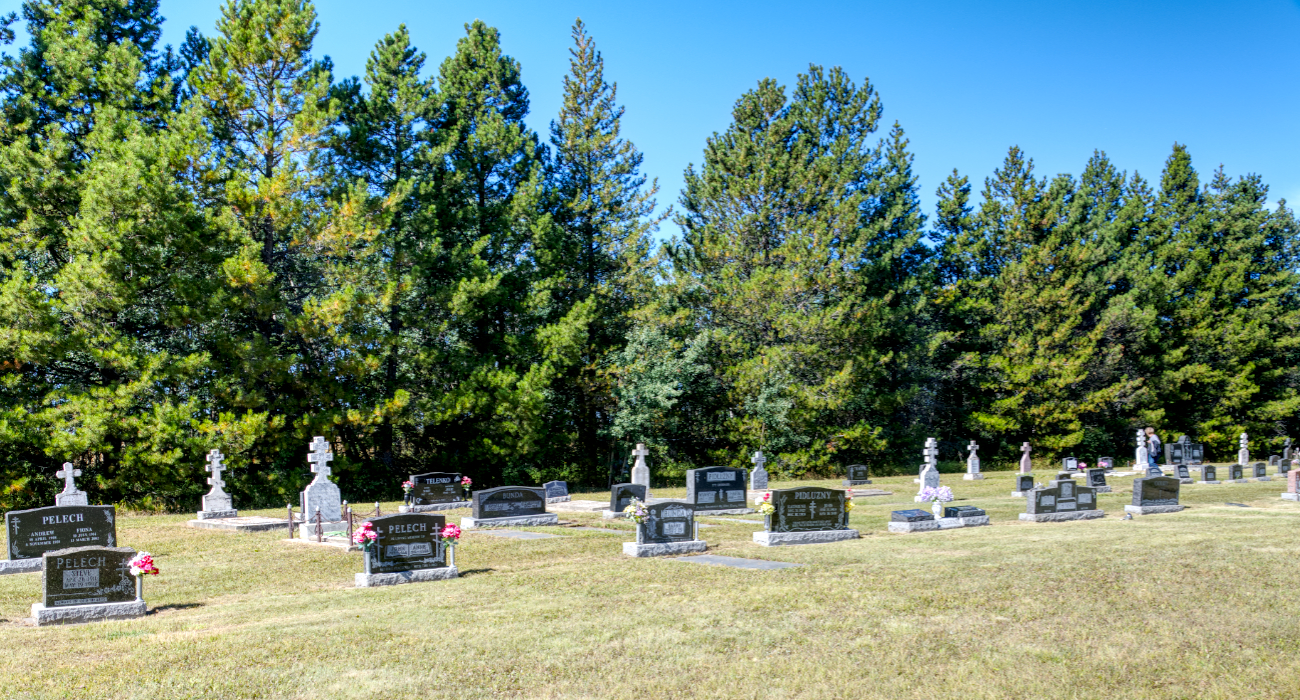

Play Memory Eternal Chant
Visit this Cemetery
GPS Co-ordinates: 54.035430, -111.862715
Cemetery GPS: 54.035169, -111.874281
Affiliation: Ukrainian Orthodox Church of Canada
Holy Spirit Ukrainian Orthodox Church – Stry, AB
All Saints Ukrainian Orthodox Church – St. Paul (UOC)
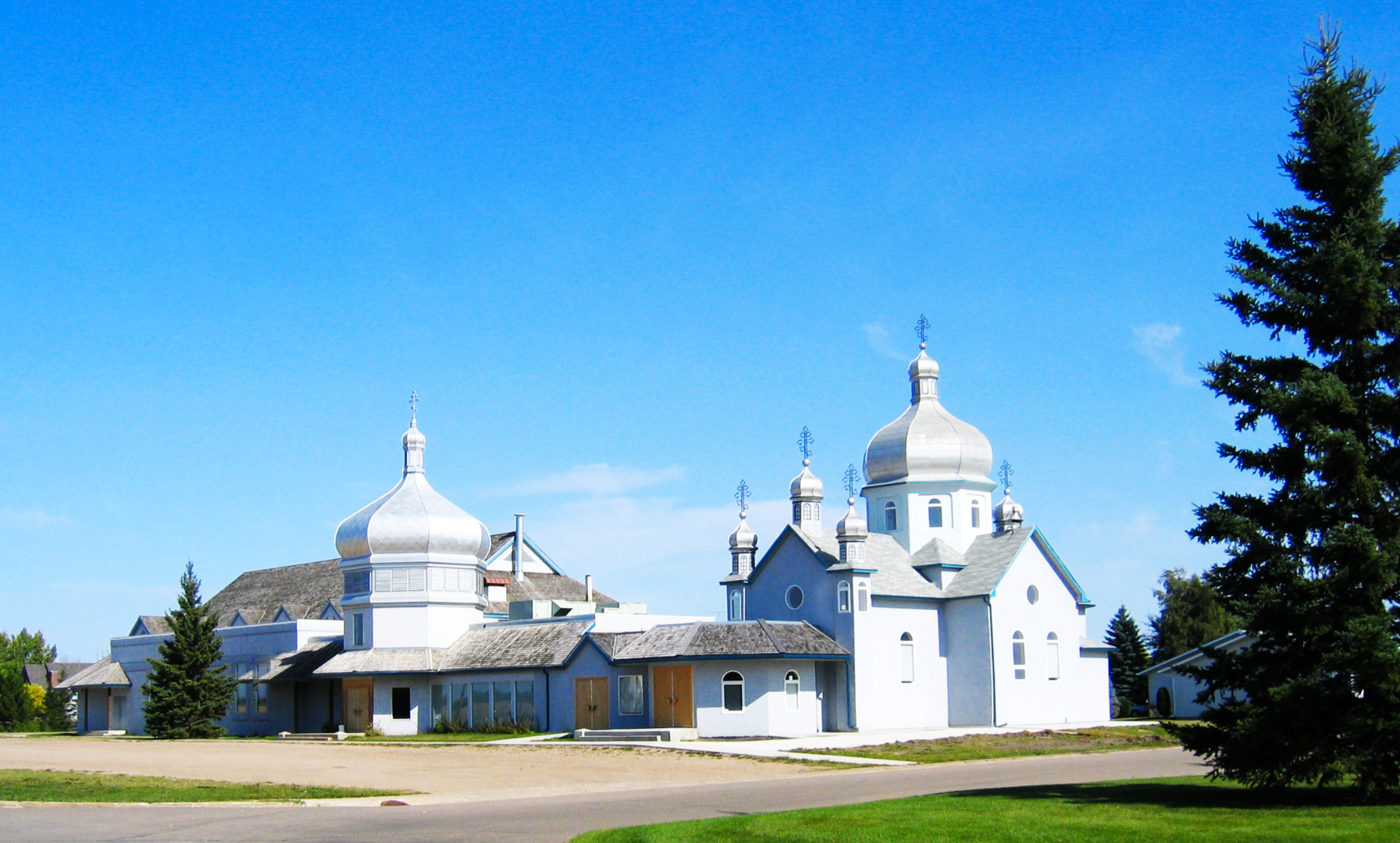

Photographs | Churches
Fr.Meroslaw Kryschuk first began holding services at St. Paul while he was the pastor of the Myrnam district. It was probably on his initiative that at a meeting was held in St. Paul on 17 September 1960 to adopt the charter and bylaws of the Ukrainian Greek Orthodox Church of Canada. This marked the formal incorporation of the All Saints parish.
In 1961, the congregation was attached to the Glendon Parish District, which was then being served by Fr. P. Dorosh-Zmiyiwsky, though he was succeeded the following year by Archmandrite J. Vitenko. Although these early years were trying, by 1962 the congregation reported celebrating ten Divine Liturgies over the course of the year. Although scant information is available about parish life during these early years, a letter from 1968 indicates that there were just eight active members, who were finding it difficult paying the money that they owed to the Consistory and asked to have several years’ debt written off. Communication from the parish remained sporadic into the 1970s, but it was obvious that financial difficulties were continuing to challenge the St. Paul faithful. Finally, in 1973 the situation stabilized to the point where the executive was able to finally provide figures for its paid membership during the previous years: 1965 – 5; 1966 – 13; 1967 – 12; 1968-1969 – 9; 1970 – 7; and 1972 – 12. The fluctuations were largely attributable to the fact that some people who were members of neighbouring congregations, occasionally also paid memberships at All Saints. Regardless, by 1973-1974, when membership stood at 11, All Saints was finally able to settle its outstanding account with the Consistory.
Within a year, however, the situation took a turn for the worse after St. Paul was briefly left without the regular services of a priest. At this time, the congregation considered discontinuing paying membership to the Consistory. Perhaps instead helping neighbouring congregations by attending their services. Fortunately this crisis quickly passed, and such drastic action was successfully averted. And despite these early difficulties, the congregation gradually gained strength, undoubtedly benefiting in no small measure from the fact that it was based in a growing town that was a regional hub and a county centre.
Thus, as the 1988 millennium of Ukrainian Christianity approached, All Saints Church began to think boldly about its future. Writing to the Consistory in December 1986, the executive requested Winnipeg’s support for its ambitious plans to build a major multi-use facility that would have “…the potential to serve the cultural and social needs of Canadians of Ukrainian ancestry, not only in the town of St. Paul, but also its surrounding communities, counties, and municipal districts.” Incorporated in the centre’s design would be a “…library, meeting rooms, dance training facilities, offices, theatre, hall, kitchen, and kiosk for the retail centre of Ukrainian arts and crafts.” Obviously, part of the intention was to use the centre to generate income and support for the congregation, by making it available for rent by outside groups. Although considered a risky move by some in the parish, the majority decided to proceed with the plan to construct the state of the art structure, which also included a domed area that could serve temporarily as a place of worship. Until this time, the congregation had been using an old church which had been outgrown and was in a dilapidated state.
After the centre was completed, it became a very difficult task to find sufficient volunteers to staff functions held at it and to raise money to pay off the large mortgage. A few individuals even quit the congregation because they had opposed the decision to build the facility and felt vindicated by the struggles to operate and pay for it. Nevertheless, a stalwart core of parishioners soldiered on in their efforts, though it eventually became obvious that the centre was not going to attract a large group of new church members capable of building a modern new sanctuary on the same property.
Consequently, it was decided instead to purchase the no-longer used Holy Ghost church in Willingdon and move it to St. Paul for restoration and use as the All Saints parish sanctuary. This was done over a two-day period on 26-27 March 2002, when the church was carefully lifted from its foundations and transported slowly by truck more than eighty kilometres to the north side of the Saskatchewan River and its new home beside the All Saints Ukrainian Cultural Centre. Originally built in 1938 under the direction of the talented Ivan Mnoholitnay, the five-domed cruciform structure was placed on a foundation adjacent to the centre, where it was subsequently restored and attached to the cultural complex through a vestibule and walkway. The first liturgy was celebrated in the rededicated church by Fr. J. Lipinski on Palm Sunday, 4 April 2004. It was formally blessed at a hierarchical service officiated by Archbishop John on 18 September 2004.
Visit this Cemetery
GPS Co-ordinates: 53.998436, -111.298967
Affiliation: Ukrainian Orthodox Church of Canada



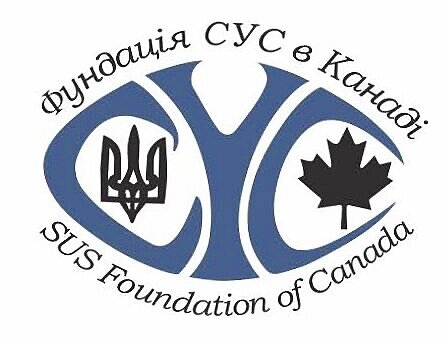 Financial support generously provided by:
Financial support generously provided by: 